This evening a very rare acoustic event was heard live and recorded on the Orcasound Lab hydrophone: a mother and calf vocalizing in isolation. The rest of the endangered Southern Resident killer whales were far beyond earshot, having departed the Salish Sea for the outer coast of Washington and BC days before.
This is a short example of what it sounded like (select the 3 dots on the right to download the clip)…
…along with a spectrogram and waveform with the labels associated with the same clip that suggest a possible call and response between the calf and mother, primarily using the S18 and S19 call types (see the SRKW call catalogs for comparison):
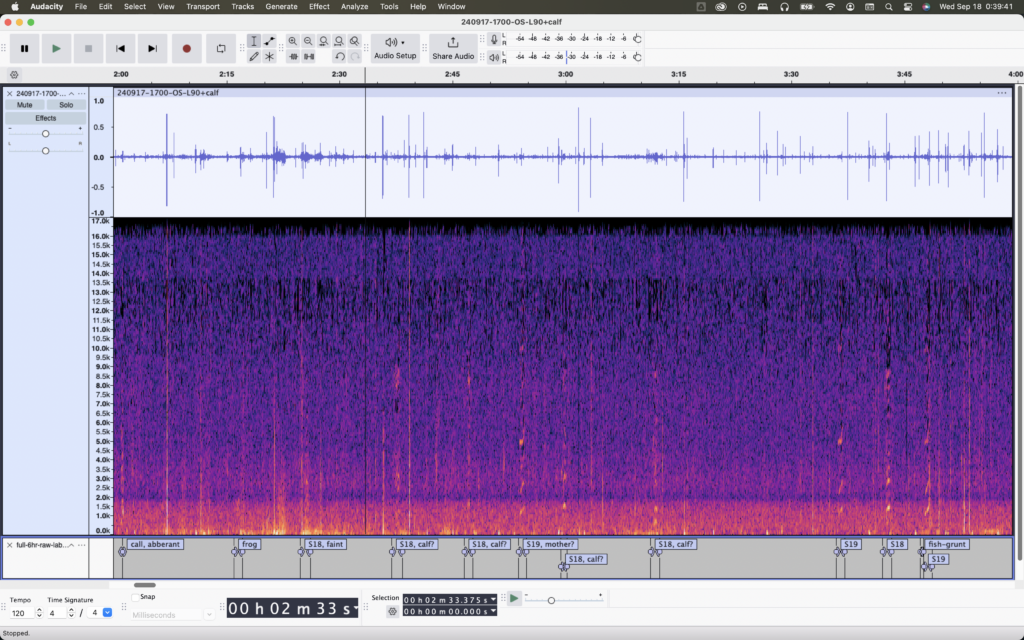
Thanks to community scientists who share their visual observations via Facebook — both the Whale Sightings in the San Juans group and the Orca Network Community Group — we can be confident these sounds were made by an L pod female known as L90 and/or her calf who was born within the last week. The Center for Whale Research confirmed yesterday that L90 is the mother of the new calf (L128):
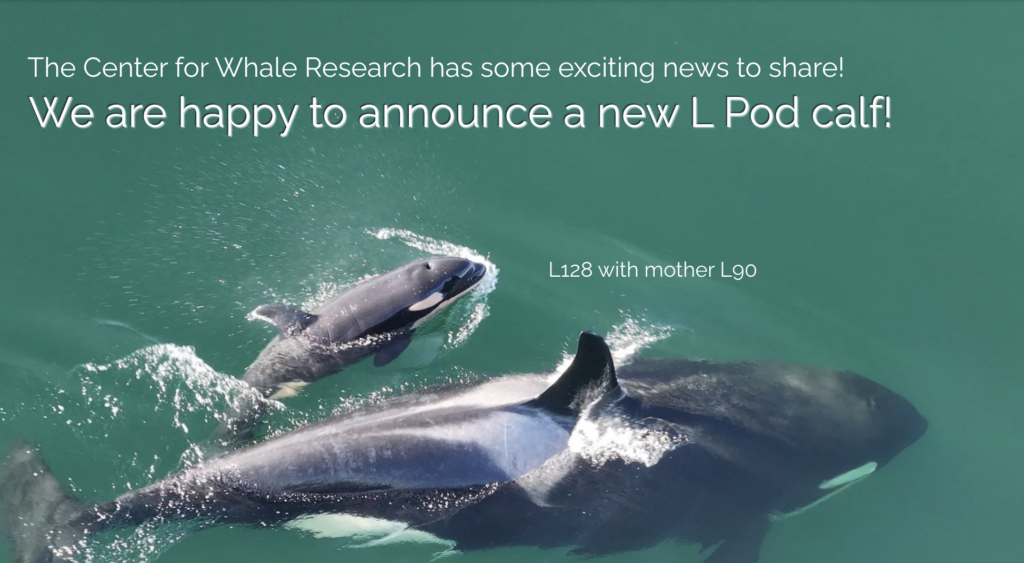
Raw data & preliminary analysis
Here is a depiction of the bout that began on Tuesday, September 17, 2024 at 16:32 Pacific and lasted 1 hour and 18 minutes (ending at 17:50). Highlighted within the 6-hour recording (12:30-18:30 PDT) is the bout:
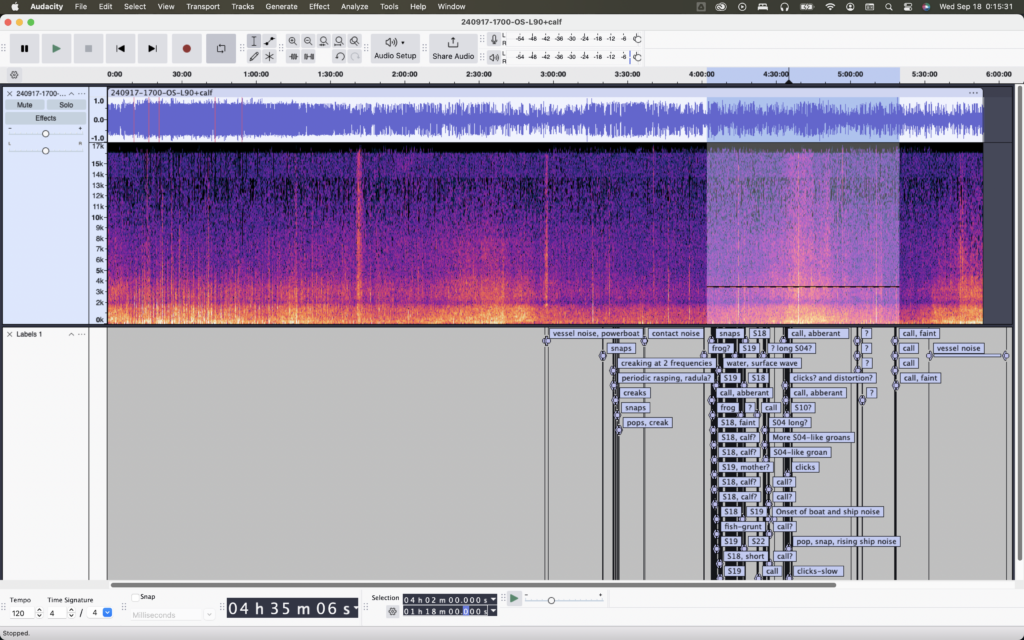
The bout is bounded by periods of vessel noise. The bout includes one vessel noise event (near it’s midpoint).
The complete bout was located within the Orcasound live-stream archive with help from these two human labels, provided by Orcasound live-listeners part way through the bout:
- 16:53:49 Human annotation of vocalization
- 17:10:47 Human annotation of echolocation
Here is a screenshot of the 1-hour-18-minute-long bout with a 2-minute highlight clip selected (which has a start time 2-minutes into the bout (16:34-16:36 PDT):
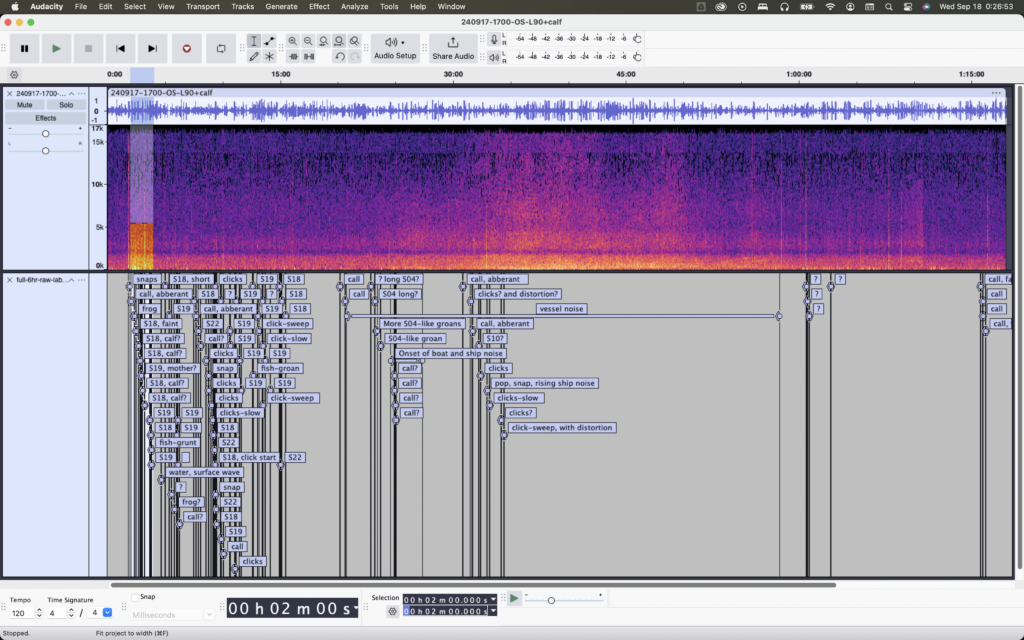
(The highlight clip depicted is the short intro sample that was presented in the intro to this post.)
Here is a bout data directory holding the bout excerpt (43 MB .ogg file) from the 6-hour recording, along with the associated Audacity label track. Most of the stereotyped pulse calls were S18s, S19s, or S22s. Many calls were recognizable, but aberrant — not quite fitting within one of the call categories established by
Scientific significance & future work
This is a rare and valuable recording primarily because SRKWs are usually recorded in large groups — either matrilines with ~5-10 individuals, or pods with ~15-60 individuals (see SRKW population history page of the Puget Sound Vital Signs). Combined with the fact that these whales are tactile and social, often touching or swimming within meters of each other, it is very difficult to locate signalers to determine “who is saying what.”
Knowing that these sounds came from either the adult mother or the infant calf helps us understand what individual killer whales sound like and how their vocalization and echolocation abilities develop as they age. This particular event helps advance an on-going technological innovation challenge that Orcasound data scientists and open source software/hardware developers set for ourselves, with support from Experiment.com and their crowd-funding community: to eventually be able acoustically identify matrilines within the SRKW pods (J, K, and L).
Please download our open data from this post (heeding our CC-BY-SA-NC license; see footer) and help us analyze and more deeply understand this unprecedented recording!
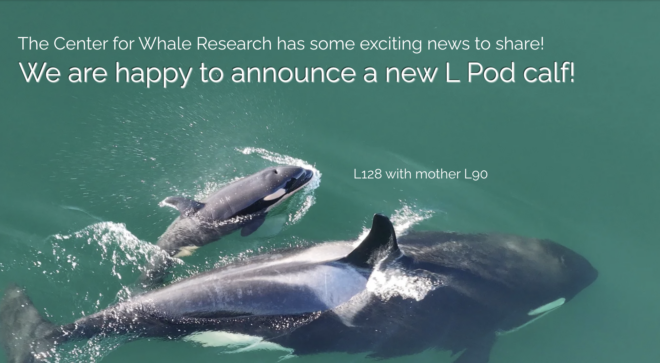
Wonderful, its first time to hear baby whale clear voice.
Excellent report, Scott. And so many annotations!
Thanks.
This opportunity is really exciting in so many ways. Thank you to all involved in the science, observation and analysis that this darling little family is allowing us to witness.
First time hear the voice, sounds amazing!